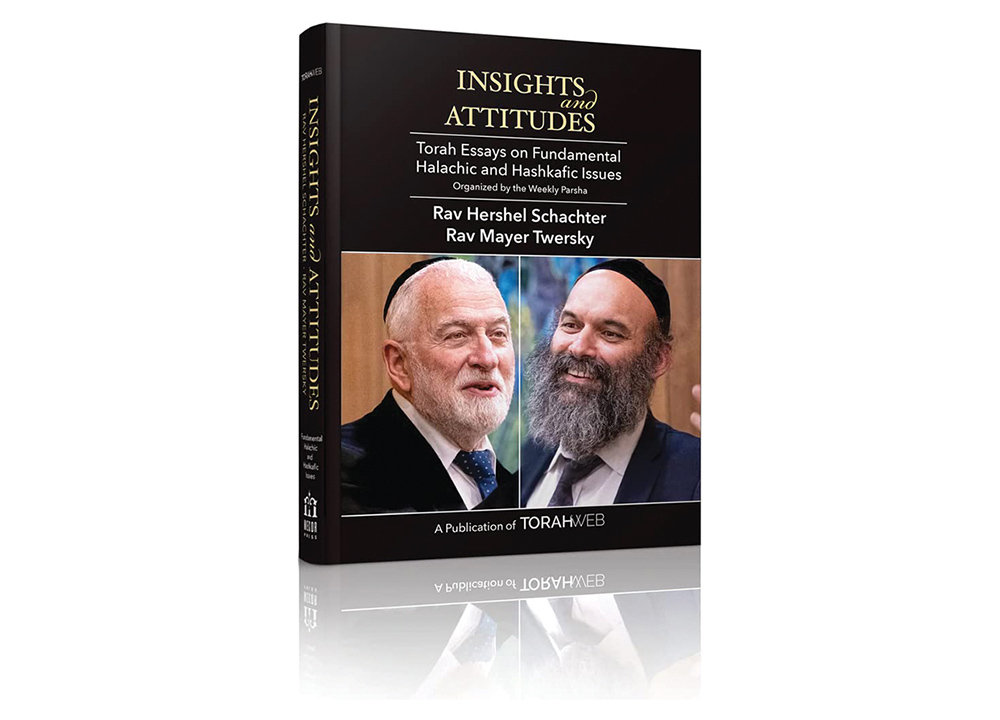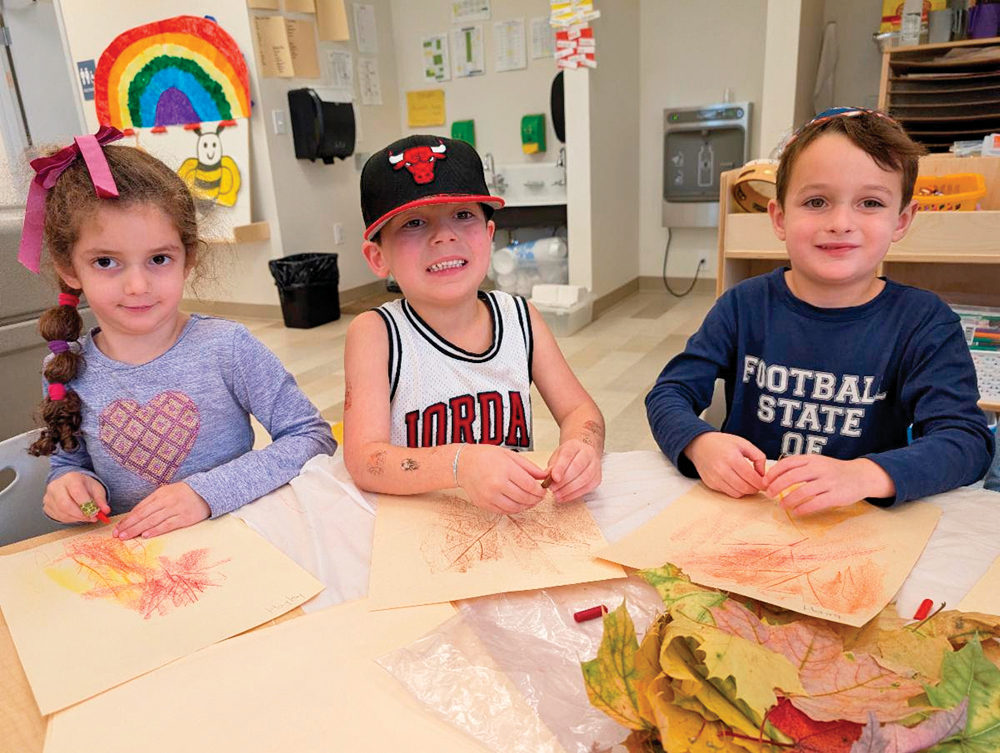Editor’s note: This series is reprinted with permission from “Insights & Attitudes: Torah Essays on Fundamental Halachic and Hashkafic Issues,” a publication of TorahWeb.org. The book contains multiple articles—organized by parsha—by Rabbi Hershel Schachter and Rabbi Mayer Twersky.
It is very painful to see that there is missionary activity taking place in Eretz Yisrael. The official Catholic response to the Zionist movement (when it first began) was that this dream will never be realized. They argued that Eretz Yisrael is the chosen land set aside for the chosen people, and the Jews lost their special status as the chosen people when they rejected “oso ha’ish.” The establishment of the Medina, in 1948, clearly contradicted this claim of the Church. To defend their position, they “explained” that the Medina did not include the makom Hamikdash, the Old City of Jerusalem or Chevron, i.e., all of the holy locations of ancient Eretz Yisrael, and as such, was not considered to be “the chosen land.”
Immediately after the 1967 war, when all of these ancient holy areas were also under Jewish control, the pope proclaimed (and every year since then, all of the subsequent popes have made the same statement) that Jerusalem should become “an international city.” Because Jewish control of the Old City of Jerusalem is a glaring contradiction to the claim of the Church that we have forfeited our status as the am hanivchar (chosen nation), the Church would like control to be taken away from the Jews to defend its theological position. The Church feels that its missionary activities in Eretz Yisrael will, ultimately, lead to the Jews accepting “oso ha’ish” and once again, becoming the chosen people who rightfully rule over the holy land.
Every so often, newspapers quote non-Jewish clergy claiming that they have “a covenantal connection” with the holy land. This is a repeat of their theological principle that Eretz Yisrael is the chosen land for the chosen nation, and that after the Jews rejected “oso ha’ish,” they (the Catholics) became the chosen nation to whom God’s covenant with Avraham, Yitzchak and Yaakov to give Eretz Yisrael to their descendants applies. How painful it is that some Orthodox rabbis also state that their “brethren” (the Catholics) have “a covenantal connection” to Eretz Yisrael. These rabbis don’t realize that by making such irresponsible statements they are playing into the hands of the avodah zara.
These same rabbis pride themselves on educating thousands of Catholics, every year, in the mitzvos of the Torah. The Chumash speaks of our accepting korbanos from non-Jews (Vayikra 22:25), and the halacha speaks of non-Jews volunteering—as an אינו מצווה ועושה—to observe additional mitzvos over and above the basic seven mitzvos required of all Noachides (see Mishna Berura, end of siman 304 in the Biur Halacha). However, these rabbis are fundamentally mistaken in their understanding of this halacha.
We may only accept a non-Jew’s sacrifices in the Holy Temple when they are offered laShamayim. As long as they believe in “oso ha’ish” and are sacrificing to him, this is outright avodah zara, and we may not allow these sacrifices to be brought on our mizbeach. If a non-Jew is convinced of monotheism and wears a tallis and sits in a sukkah etc., as an אינו מצווה ועושה, this is commendable. But if a non-Jew still believes in “oso ha’ish” and wears a tallis and sits in a sukkah as a means of identifying with that avodah zara, this does not fall under the category of one volunteering to do mitzvos as an אינו מצווה ועושה, but is rather an act of deepening his commitment to his avodah zara. Woe unto those rabbis who are deepening and furthering avodah zara commitments and practices.
Years ago, Rav Yosef Dov Soloveitchik warned—both in his public addresses as well as in his written essay (“Confrontation” and its addendum)—against having any such contact with the Church. How shameful it is that people who claim to be disciples of his have “reinterpreted” his words to mean the exact opposite of what they really say, and have then added that even if at one time, he did prohibit such interaction with the Church, this clearly no longer applies today. To the best of my understanding, Mashiach has not yet arrived and the world is still full of avodah zara!
Acharonim had a debate (see Rema, Orach Chaim 156 and Darchei Moshe Yoreh Deah
151, Shach Yoreh Deah 151:7, as well as the argument of the Noda BiYehuda, Mahadura Tinyana, Yoreh Deah 148) whether believing in the trinity constitutes avodah zara for a Noachide or not; but for Jews, there is no question that it is avodah zara! And even for Bnei Noach, Rav Soloveitchik quoted in the name of his grandfather, Rav Chaim, that this understanding of the Rema and Shach was a שגגה שיצאה מלפני השליט (i.e,. an inadvertent error) and it makes no sense to distinguish between the definition of avodah zara for a Jew and for a ben Noach.
The human desire to be mechadeish (to act as an original thinker) has misled these rabbis in Eretz Yisrael to play into the hands of avodah zara and shemad. The words of this week’s parsha stand out clearly to teach us that in Eretz Yisrael, we are required to be even more careful when dealing with the Church. Time and time again, the Torah warns us that in Eretz Yisrael, we must not get involved with avodah zara. Officially, HaKadosh Baruch Hu is the King over Eretz Yisrael (see Mordechai to Gittin, no. 401), and the midrashim refer to all of Eretz Yisrael as the “palace of the King.” The Ramban (end of Acharei Mos) explains that the main location for observance of all of the mitzvos is Eretz Yisrael, and one who sins there is compared to one who rebels against a king’s authority in his palace, which is a more brazen sin than sinning elsewhere (see Avnei Neizer, Yoreh Deah, no. 454).
Apparently, the sanctity of Eretz Yisrael arouses strong feelings of spirituality that one must take care to channel properly. These strong feelings can mislead even the wise to get carried away by their imagination and their desire to be original thinkers, and in turn, to strengthen avodah zara and shemad. Some rabbis have gained credibility by claiming to be disciples of Rav Soloveitchik, and then have proceeded to totally misrepresent his views on these issues of avodah zara and shemad.
Rabbi Hershel Schachter joined the faculty of Yeshiva University’s Rabbi Isaac Elchanan Theological Seminary in 1967, at the age of 26, the youngest Rosh Yeshiva at RIETS. Since 1971, Rabbi Schachter has been Rosh Kollel in RIETS’ Marcos and Adina Katz Kollel (Institute for Advanced Research in Rabbinics) and also holds the institution’s Nathan and Vivian Fink Distinguished Professorial Chair in Talmud. In addition to his teaching duties, Rabbi Schachter lectures, writes, and serves as a world renowned decisor of Jewish Law.













